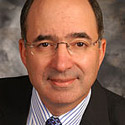11:00 AM
'Exchange-Traded' Does Not Equal 'Risk-Free'
Somewhere the ideas of "exchange-traded" and "risk-free" have become linked in the eyes of the public. But this is a fallacy. Just because Congress mandates that OTC products trade on-exchange doesn't mean that OTC derivatives are suddenly safe and liquid, or that they won't blow up. It just means that buyers and sellers agree to trade a defined set of products according to a predefined set of rules and subject to a higher degree of oversight. Products can still crater, demand can still wane and markets can still panic -- whether products are exchange-traded or not.
For OTC products to move onto an exchange there need to be people and institutions who want to trade, firms who offer liquidity and a set of rules on which all parties agree. This translates to buyers, sellers, and liquidity posters and takers all meeting in a virtual place under a consistent set of rules. While just agreeing to trade may create demand, for an exchange to be successful there needs to be an almost endless supply of quotes whose interplay determines the price. But who puts up those prices, and why do people trade? Understanding these dynamics is the difference between success and failure.
Continuous markets (i.e., exchanges) come in two flavors: order- or quote-driven. Order-driven markets require limit orders (people/institutions wanting to trade at a specific price), and quote-driven markets require market makers that are ready and willing to quote. Where demand is plentiful (certain equities and exchange-traded derivatives), an order-driven market works well; where client demand is low, market makers are needed to provide liquidity.
For many OTC derivatives there is neither a large supply of orders nor a deep pool of market makers. These markets are typified by large orders (multimillion-dollar agreements), complex contracts (many are customized), few market makers (less than 15 major U.S. dealers) and, as a result, an inability to easily hedge risk. In addition there are limited central clearing facilities, requiring credit ratings and counterparty risk management to be taken very seriously -- especially post-Lehman.
With all of these hurdles, how can we think that with the wave of a pen that we will make an opaque OTC request-for-quote market into a seamless, continuous exchange-traded market? There is greater chance of killing the entire product than negotiating this transformation.
If we want a market in which institutions can efficiently manage corporate risk without market failure, we either need to radically redesign the contract or live with a two-tier market -- a market in which standardized agreements can be easily traded, cleared and hedged; and a second in which corporations can manage risk through customized and bespoke agreements. This is similar to the futures and forward markets, in which standardized agreements can be traded in a continuous and transparent environment, and the customized market, in which corporations can develop very specific agreements corresponding to their actual risk.
A clearing facility would also be needed for the standardized agreements, which could be easily valued, margined and risk managed, while the bespoke agreements would need to be bilaterally cleared with an adequate and higher level of capital reserves than has existed in the past (which is to say, zero).
Whether this market trades on-exchange or off-exchange is immaterial. Some of the largest and most liquid products in the world trade off-exchange. What is more important is having the appropriate clearing, capital cushion and risk management facilities to withstand a severe market and/or counterparty shock to the system. This needs to be accomplished by understanding the market, products, and mechanical dynamics of how products trade, liquidity is developed and risk is managed.
If we want this market to survive -- which most multinational corporations do -- the heat needs to be removed from this discussion and cooler heads must prevail.
Markets do not develop in a vacuum. There are reasons markets are continuous, and reasons why they are not. Just because we want a market to migrate onto an exchange doesn't mean that the market will transform, nor does it mean that its the right decision. There are better ways to trade illiquid products than by putting them on-exchange and better ways to manage risk than by mandating that a central counterparty clear illiquid products that cannot be valued. Markets and clearing facilities should be determined by their product and liquidity characteristics, not by popular demand.
Larry Tabb is the founder and CEO of TABB Group, the financial markets' research and strategic advisory firm focused exclusively on capital markets. Founded in 2003 and based on the interview-based research methodology of "first-person knowledge" he developed, TABB Group ... View Full Bio




















